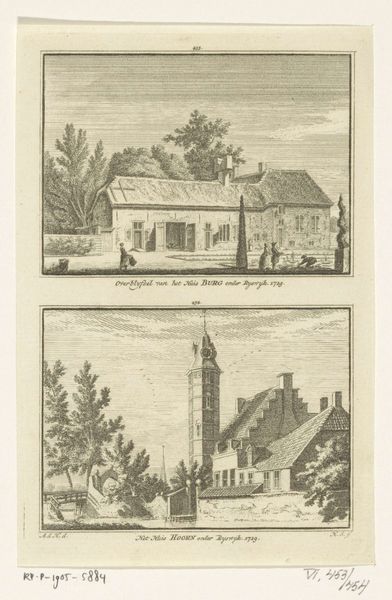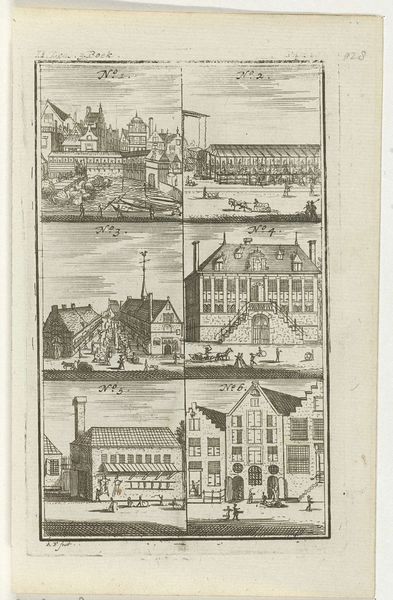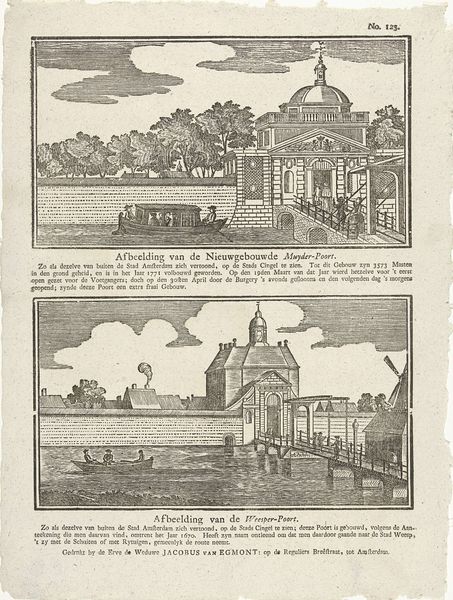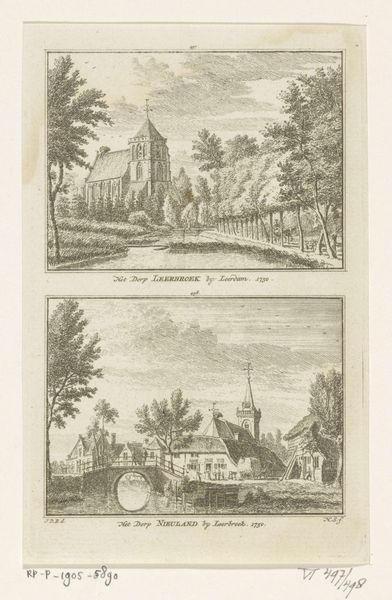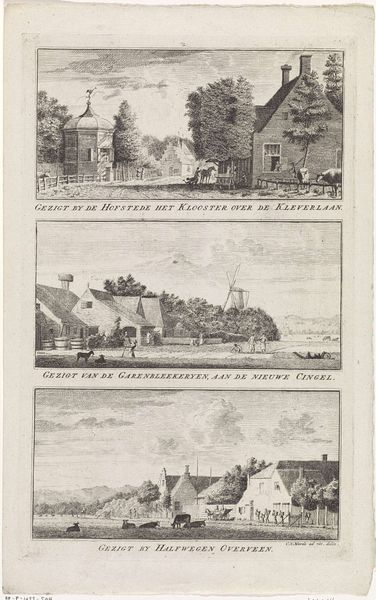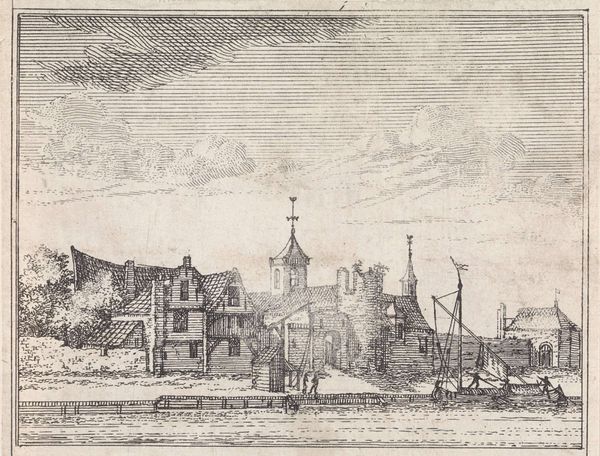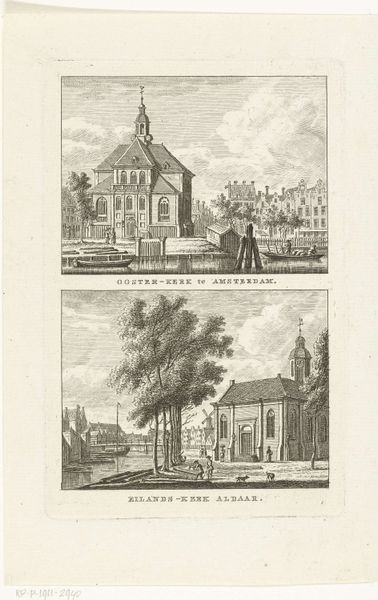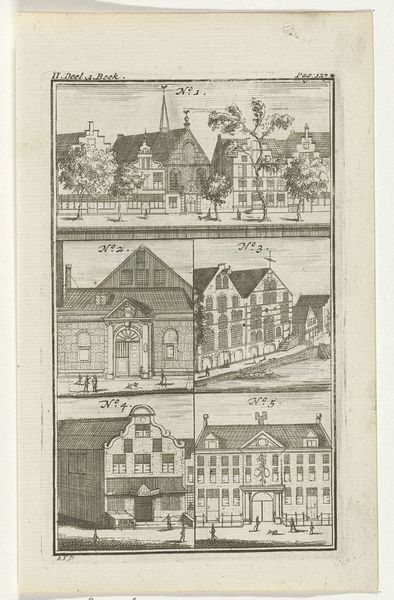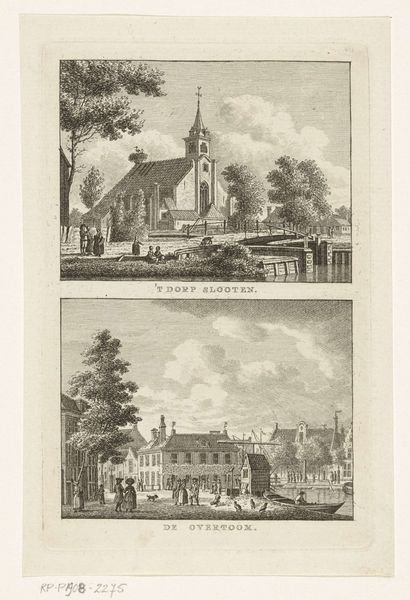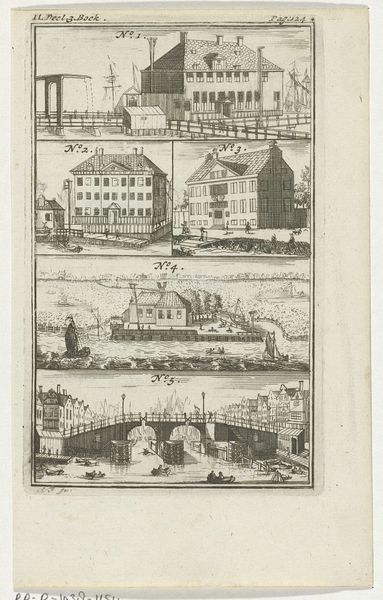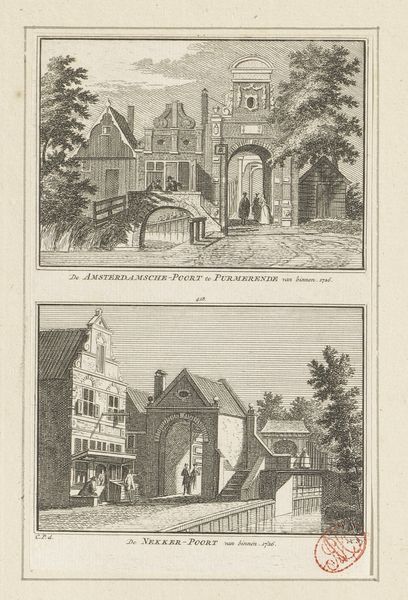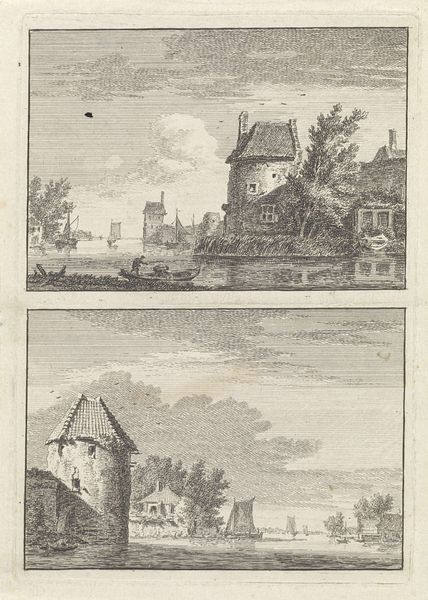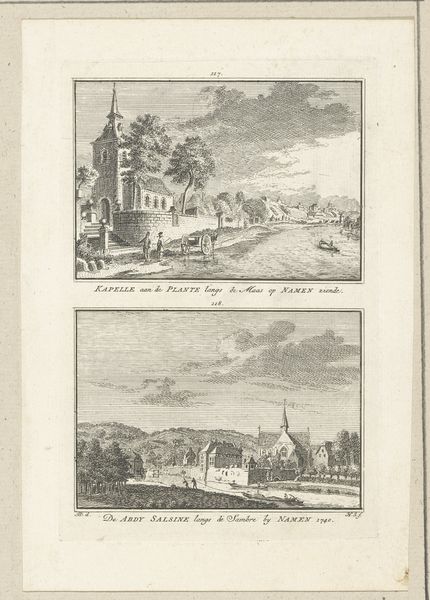
Gezicht op Huis te Werve, Rijswijk en het Huis Klein Matenes, Voorburg 1757
0:00
0:00
hendrikspilman
Rijksmuseum
drawing, print, engraving
#
drawing
#
baroque
#
dutch-golden-age
# print
#
landscape
#
cityscape
#
engraving
Dimensions: height 85 mm, width 110 mm
Copyright: Rijks Museum: Open Domain
Hendrik Spilman created this print of houses in Rijswijk and Voorburg using etching, a printmaking technique reliant on acid to corrode the unprotected parts of a metal surface, creating a design in the metal. The etched lines define the forms of the buildings and suggest texture, light, and shadow. The process of etching requires careful preparation and skilled execution. The metal plate must be coated with a waxy, acid-resistant substance, then the design is drawn through this ground, exposing the metal. The plate is then immersed in acid, which bites into the exposed lines. The depth of the lines, and the resulting darkness of the printed image, depends on the amount of time the plate is left in the acid. Different strengths of acid can be used to create different effects. This print demonstrates Spilman's mastery of the medium, effectively conveying architectural detail and spatial depth. Considering the labor involved in producing the etching plate, it highlights how printmaking can transform architectural appreciation into a commodity, reaching a wider audience through reproduced imagery. This piece exemplifies how close observation and skilled craftsmanship combine to offer insights into both place and the social context of its time.
Comments
No comments
Be the first to comment and join the conversation on the ultimate creative platform.
